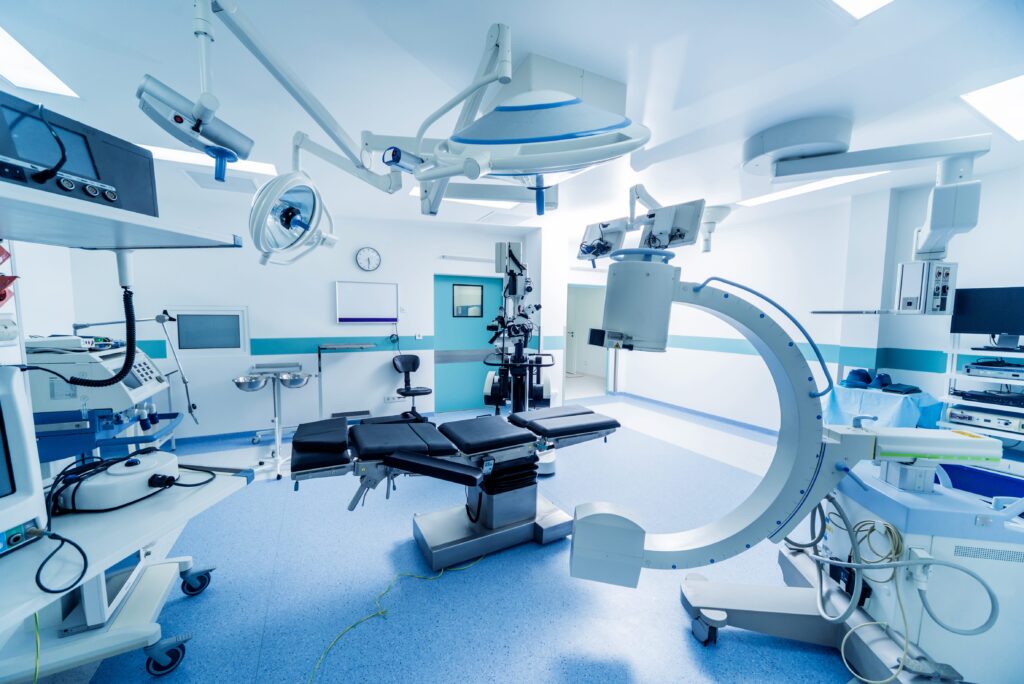
Engineered to Cure: Unlocking Innovation in the Medtech Industry
Table of contents
- Overcoming Challenges in Medical Device Product Development with Engineered to Cure
- Navigate Safety with A Risk-Based Approach
- Foster Collaboration in a Collective Environment
- Break Silos with A Data-Driven, Model-Based Approach
- Adapt to Markets with Product Variability and Customization
- Revolutionize Medical Device Product Development through Simulation
- Future Trends: Navigating the Evolving Landscape of the Medtech Industry
- Advancements In Technology
- Changing Regulatory Landscape
- A Shift Toward Value-Based Care
- Revolutionizing the Medtech Industry with Engineered to Cure
Medical device manufacturers are faced with the significant challenge of swiftly and affordably engineering medical device products that are safe, effective, and tailored to the diverse needs of patients.
In a market that demands only the most cutting-edge technologies, the best option for medical device companies is to adopt a toolkit like Engineered to Cure to make sure they stay ahead of the competition.
Powered by 3DEXPERIENCE, Engineered to Cure is built on a data-driven, model-based engineering platform that facilitates collaborative design and development. It encompasses innovative apps, robust systems engineering, and multiphysics simulations, all while mitigating safety issues with a risk-based approach.
Engineered to Cure isn’t just a tool for medical device product development; it’s a solution to many challenges that the medical technology (medtech) industry faces. This article delves into these complexities and explores how Engineered to Cure is instrumental not only in overcoming them, but in accelerating innovation in medtech.
Overcoming Challenges in Medical Device Product Development with Engineered to Cure
Navigate Safety with A Risk-Based Approach
In the complex realm of medical device product development, regulatory bodies face the challenge of ensuring safety without impeding time-to-market. The solution lies in a risk-based approach, where potential risks are systematically identified, assessed, and mitigated throughout the entire product development process.
Aided by Engineer to Cure, designers and engineers can integrate meticulous risk assessments into each phase of product development, anticipating issues and fostering a proactive approach. This approach becomes the compass for design validation and regulatory compliance, guiding the journey through manufacturing intricacies.
Foster Collaboration in a Collective Environment
Engineered to Cure’s risk-based approach hinges on efficient collaboration. It enables teams to break down silos, ensuring seamless collaboration among professionals from diverse backgrounds, ranging from engineering to medicine, and beyond.
This open, collaborative approach is woven into every stage of medical device product development, accelerating innovation and risk mitigation through the exchange of knowledge and insights.
Break Silos with A Data-Driven, Model-Based Approach
Data sits at the heart of innovation. It’s not only vital for accelerating decision-making in the medtech industry but also for unlocking additional insights that are crucial for navigating the complexities of medical device product development.
With a robust data-driven approach guided by model-based systems engineering, Engineered to Cure distinguishes itself by efficiently harnessing and utilizing data.
It fosters a shared foundation, establishing relationships between different components, ensuring traceability, enforcing change control, meeting product requirements, and enhancing communication across interdisciplinary teams.
Adapt to Markets with Product Variability and Customization
Adapting to ever-changing markets is a growing challenge for innovation in medtech.
There is a rising demand for measurable long-term improvements in patient outcomes, increasing the need for greater personalization in medical devices. What’s more, the rising complexity of combination products brings forth new challenges in regulatory frameworks.
With a risk-based approach to product development at its core, Engineered to Cure enables seamless customization and product variability to meet the surge in this demand across diverse patient populations and varied healthcare settings.
The revolutionary platform offers rapid exploration of devices and patient variability – a challenge that traditional testing and manufacturing methods struggle to navigate.
Revolutionize Medical Device Product Development through Simulation
Fueled by its data-driven strategy and risk-based approach, simulation provides a transformative solution to one of the most persistent challenges in the medtech industry – the reliance on expensive and time-consuming physical, animal, and human testing.
The early introduction of simulation into the design process is pivotal, offering a broader range of possibilities and quicker identification and mitigation of potential risks.
For instance, simulating a plastic device’s performance in different temperatures, from the scorching Sahara to freezing Alaska, provides instant insights not easily attainable through traditional testing methods.
Engineered to Cure embraces virtual experimentation, enabling the mechanical performance of devices to be rigorously validated using regulatory-grade models.
Future Trends: Navigating the Evolving Landscape of the Medtech Industry
Having delved into the challenges of medical device product development, an intriguing question arises: What does the future hold? Amidst the ever-evolving landscape of medtech, a variety of trends are emerging.
Advancements In Technology
Artificial intelligence (AI) and machine learning are everywhere, and the medtech industry is no exception. The integration of AI is not only revolutionizing diagnostics and treatment plans but is also driving the development of advanced wearable technology.
Take AI-powered devices like smartwatches and wearable blood pressure monitors, for example. They continuously track vital signs in real-time, enabling remote patient observation and early detection of potential health issues.
Amidst this transformative wave and despite AI’s many benefits, fear often accompanies change. But how do we tackle fear head-on? The answer lies in clear communication.
By fostering transparency about the benefits, risks, and limitations of AI, a solid foundation of trust can be established among healthcare stakeholders, investors, patients, and employees alike.
Changing Regulatory Landscape
In this highly regulated industry, regulatory compliance is no easy feat in medical device product development. What’s more, the regulatory landscape shows no sign of standing still.
From evolving regulations and global harmonization to the growing concerns of cybersecurity and post-market surveillance, navigating the changing regulatory landscape will continue to be a formidable challenge for the medtech industry.
Notably, the industry is beginning to focus more on post-market surveillance. The introduction of the new medical device regulation (MDR) has emphasized the need for efficient monitoring of a medical device’s real-life performance once it enters the market.
A Shift Toward Value-Based Care
Another pivotal transformation for innovation in medtech is the shift towards value-based care, aligning with the ethos of “do well by doing good”. This holistic approach centers on outcome-oriented solutions, placing the improved well-being and quality of a patient’s life at the forefront of healthcare initiatives.
The integration of AI, machine learning, and simulation further propels this paradigm shift, enabling precise computations to identify optimal, tailored drug and medical device solutions. The acceleration of timelines and substantial cost reductions have become a reality, paving the way for quicker access to innovative solutions for medical device product development.
Revolutionizing the Medtech Industry with Engineered to Cure
By unveiling the intricacies of medical device product development and looking to the future, Engineered to Cure takes center stage as a dynamic solution to the diverse challenges faced by the medtech industry. From navigating risks with a robust risk-based approach to fostering collaboration, leveraging data, and pioneering simulations, this platform sets a new standard for innovation.


